Can a groundhog really predict spring?
Oh, Phil! The legendary groundhog who pops out every year and overshadows meteorologists (see what I did there).
I love groundhog day! While the predictions of Punxsutawney Phil are just superstition, the yearly tradition is a great conversation starter.
As a quick refresher - every February 2nd celebrity groundhog Phil emerges from his hole. If the skies are clear Phil will see his shadow and we will have six weeks more of winter. A cloudy day means Phil does not see his shadow, indicating an early spring.
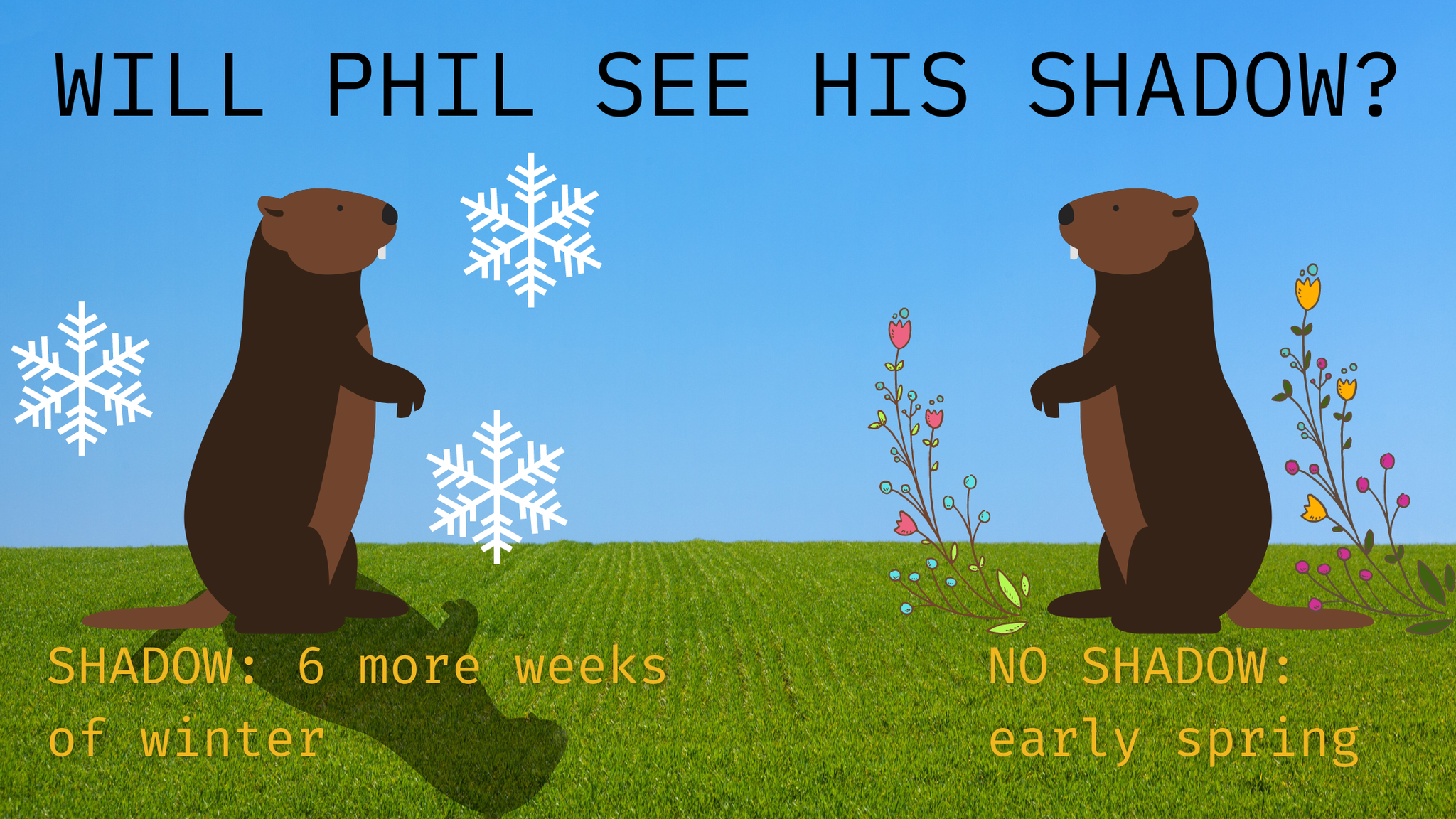
The United States first celebrated Groundhog Day in 1886. However, the tradition dates back even further. Groundhog day originates from another Christian celebration called Candlemas Day, which marks the midpoint between the winter solstice and spring equinox. Traditionally Candlemas Day is celebrated by clergymen blessing candles. Clear skies on Candlemas day means a longer and rougher winter would follow. Cloudy skies meant spring would arrive early. The Germans were the first to introduce a hedgehog as a predictor of a late or early spring.
German settlers in Pennsylvania brought the tradition to the U.S. Since hedgehogs are not native here a groundhog was used instead. In 1886, the first Groundhog's Day event appeared in the local newspapers. Now, Gobbler's Knob, PN is the home of our famous groundhog.

The Groundhog Club’s Inner Circle presides over the ceremony. At 7:25 a.m. eastern time Phil's prediction is revealed.
This morning, Phil predicted six more weeks of winter when he saw his shadow. Now, if you look at the sky conditions during the event, it was a cloudy morning so not sure how he saw his shadow....
How accurate is Phil? According to the Inner Circle, Phil is 100% accurate. In actuality, his track record is anything but 100%. Phil has seen his shadow 105 times (including today's prediction), indicating a longer winter. Only 20 times has he not seen his shadow. This is all according to the Stormfax Weather Almanac, who records Phil’s predictions.
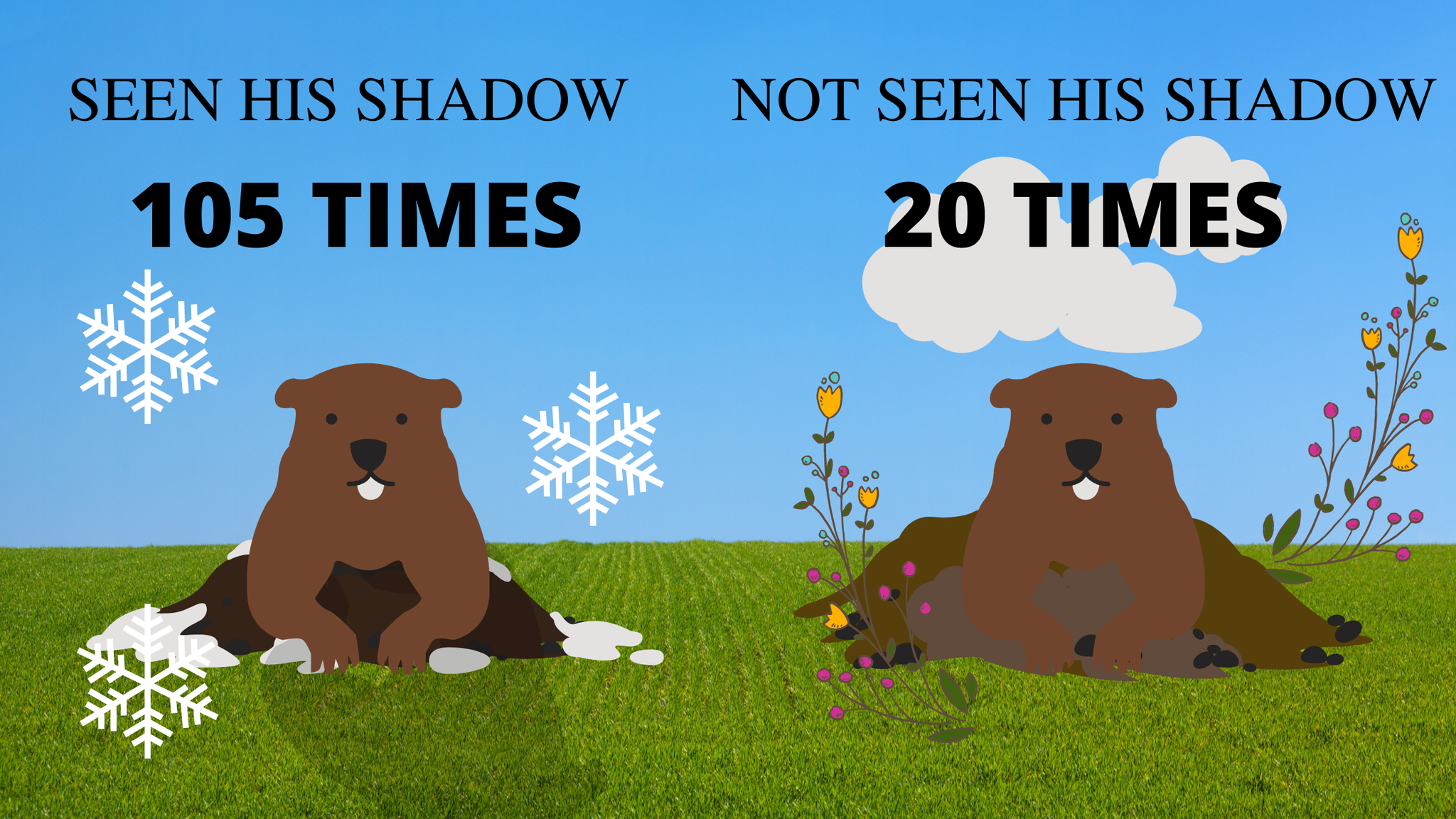
The National Oceanic and Atmospheric Administration determined from climatology that Phil's accuracy is at most 40%.
How did Phil fare these last few years? Let's analyze the average temperatures leading up to the spring equinox, the official start of spring. If Phil predicts an early spring, then February and March would experience above-average temperatures. A longer winter would indicate below-average temperatures for February and March.
2020 - No shadow
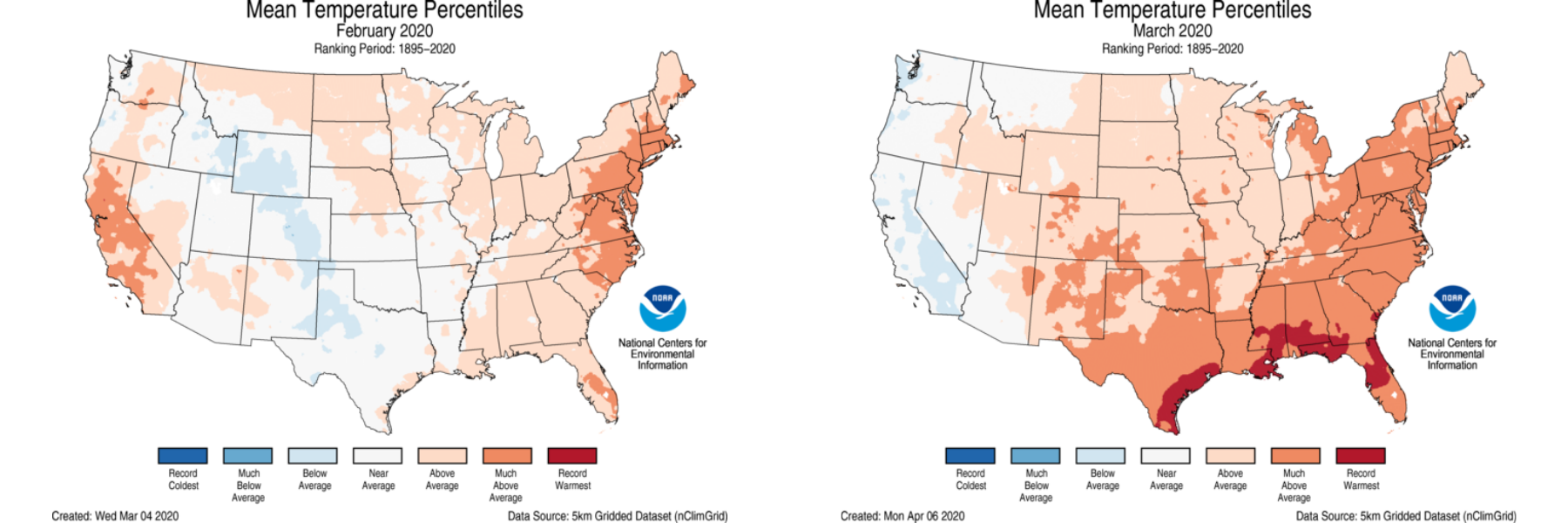
What happened - Across the U.S. the temperatures in February generally trended above or near average. Areas along the East Coast and in California saw much above-average temperatures. Now, the central Rockies and stretching into Texas experienced below-average temperatures. When looking at the March temperature outlooks, the southernmost coast saw record warm temperatures. The East Coast trended towards above-average temperatures.
For much of the country, Phil’s prediction was correct. Warmer than average temperatures were experienced before spring officially began.
2019 - No shadow
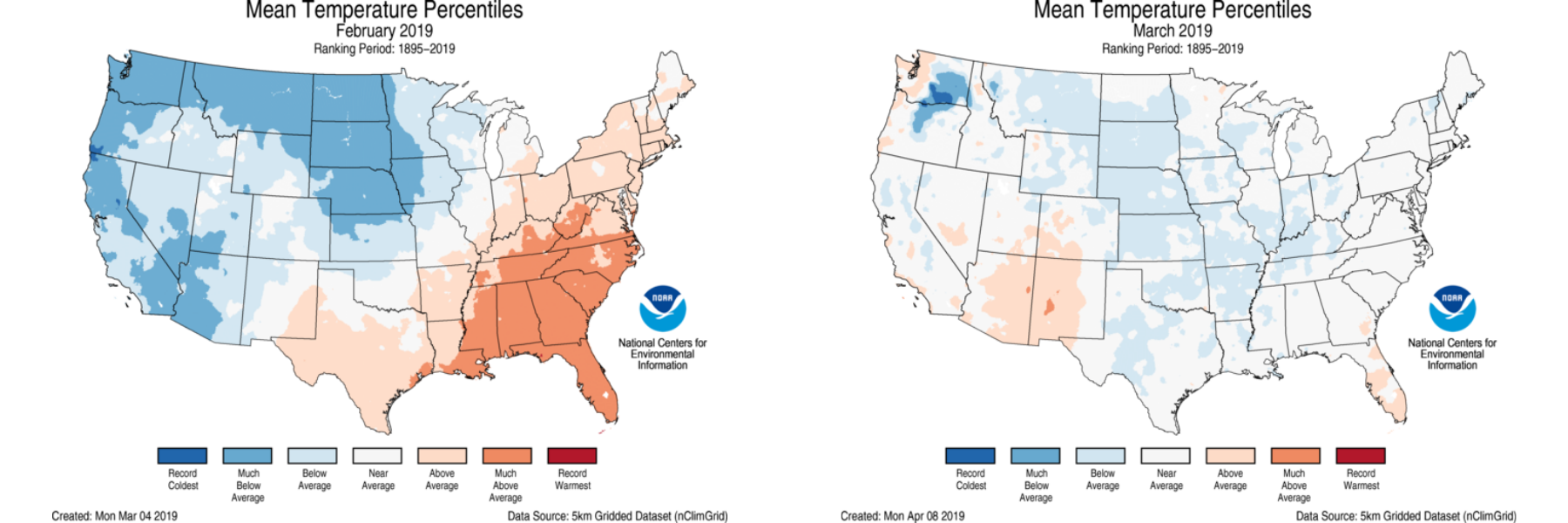
What happened - Phil did not fare too well in 2019. There was a divide with the Central Plains and westward saw below-average temperatures. While Texas, into the Ohio River valley and all areas along the east and southeast, saw above-average temperatures. In March, however, most of the country experienced either near or below-average temperatures. Given the trend, spring did not come early this year.
2018 - shadow
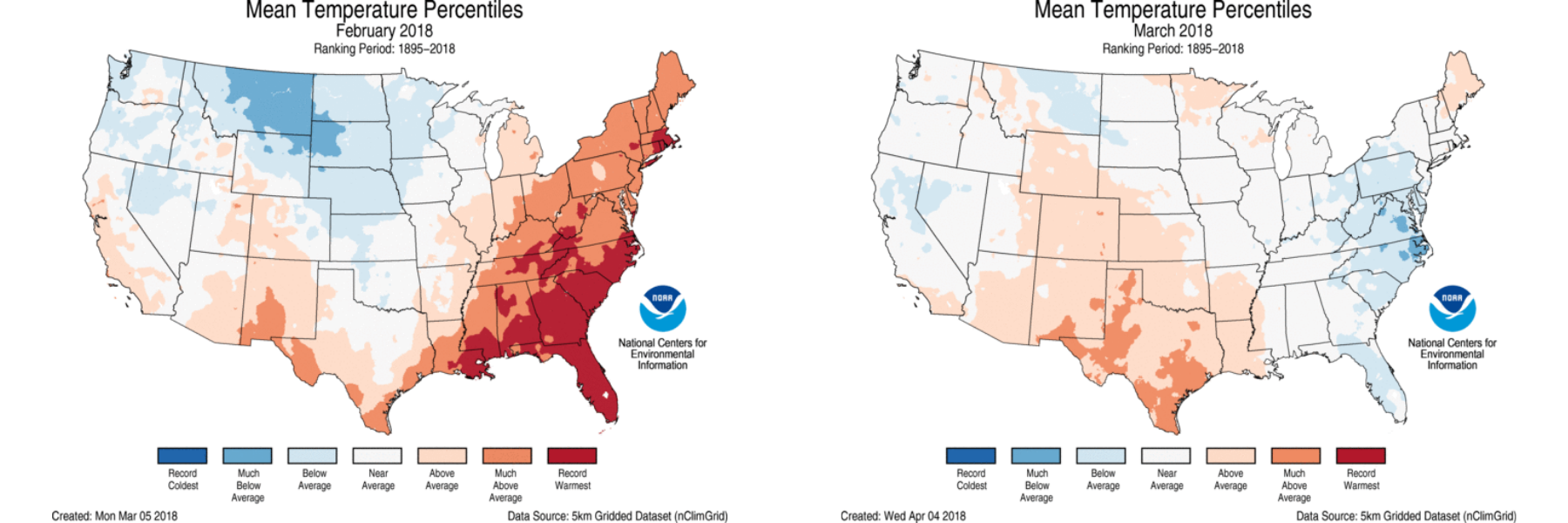
What happened - Temperatures trended above-average from the northeast to the southeast. The Northern Plains and the Pacific Northwest saw below-average temperatures for February. In March, the Central Plains, New Mexico, and Texas all experienced above-average temperatures. The East Coast saw slightly below-average temperatures in March. Was Phil correct? It depended on which half of the country you were in.
2017 - Shadow
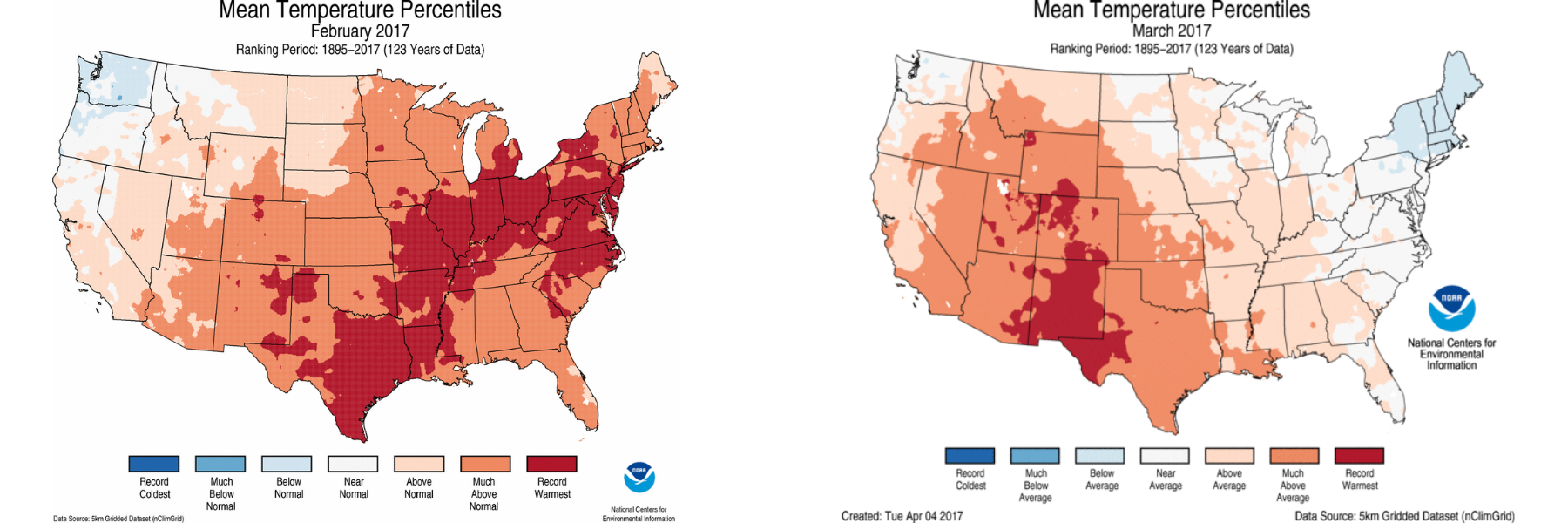
What happened - Phil did not make an accurate prediction. February saw most of the U.S. (except for Washington and Oregon) experiencing above-average and even recording-breaking warm temperatures. In March, except for the New England states, the U.S also saw above-average temperatures. Arizona had record-breaking warmth during March.
What about the outlooks for this year?
This year Phil predicted more winter, despite the cloudy skies. Not sure how he saw his shadow... Regardless, looking at the temperature outlooks for February, the Ohio River Valley, Midwest and west are trending towards below-average temperatures. Outlooks for March have not yet been released by the Climate Prediction Center but based on the three-month temperature outlook for February through April, above-average temperatures are expected.

0 Comments Add a Comment?